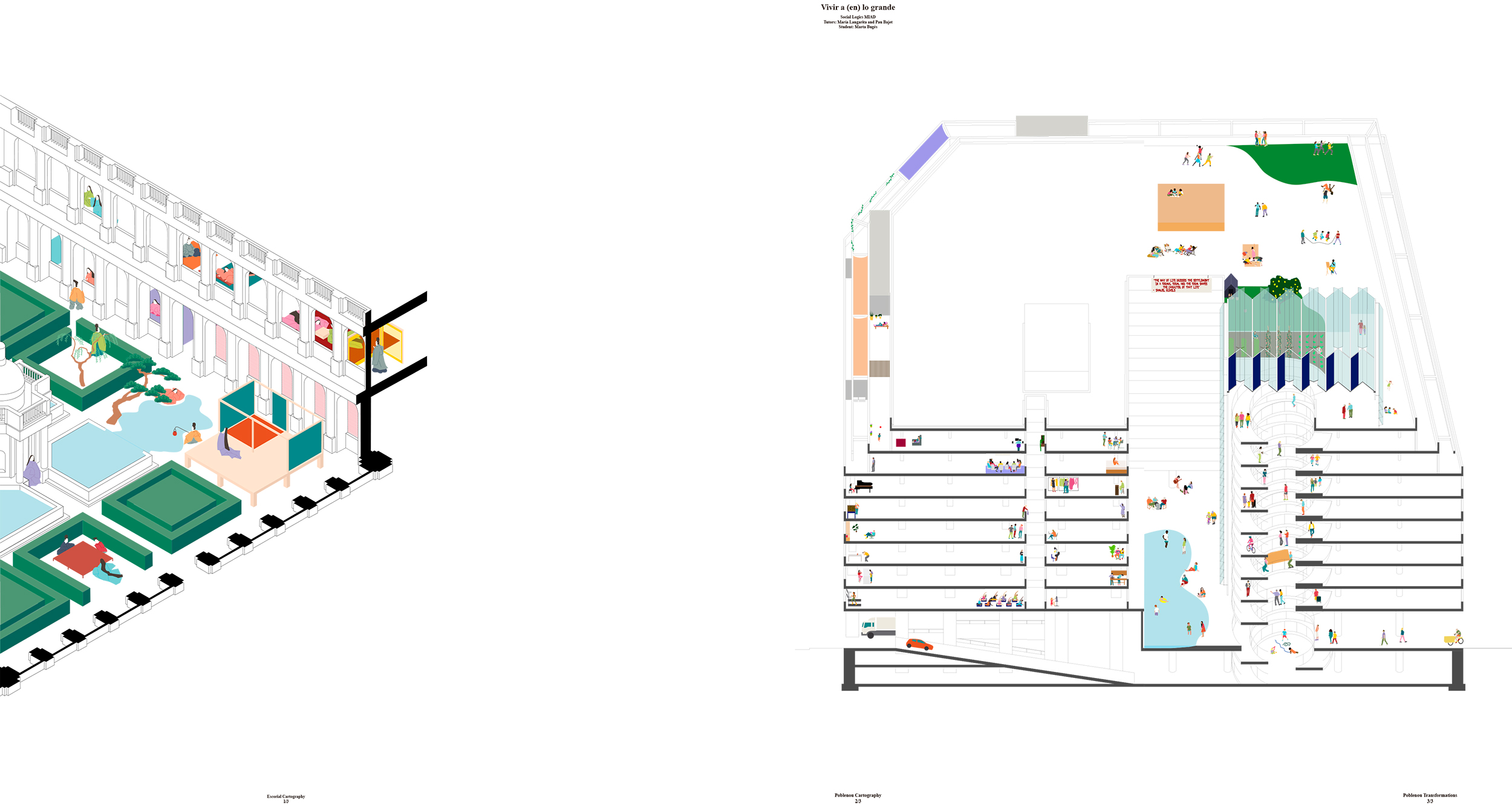| Architecture needs to be a catalyzer for social interaction. Exploring the capacity of a building in welcoming diverse forms of inhabitation is key to be aware of the full dimension of a built environment.
This triptych starts with a reinterpretation of the El Escorial courtyard. The French garden, which aims to celebrate the figure of the monarch by imposing symmetry and over-controlled geometry, is inhabited by some illustrations from “The Tale of Genji”. Mixing these two worlds is a provocation that helps us rethink standards and how space can be oppressive. By blurring the limits between architecture and nature and introducing gradations of intimacy in such a harsh context, the appropriation of space is highlighted.
The middle drawing represents a former industrial building in Poblenou, Barcelona. Today, the envelope is adapted for different purposes; however, they are not connected, and they appear as isolated scenes that are not contributing to the collective life that could potentially take place.
The transformation of the building proposed in the third drawing aims to achieve a common space where each individual can be part of a system. The activities fostered by the architectural support bring people together and generate dynamics that benefit the community. The rooftop that was previously unused is filled with greenery, and the narrow central courtyard has been turned into a “plaza”. These two spaces are connected with a circulation structure that aims to generate numerous encounters. |




